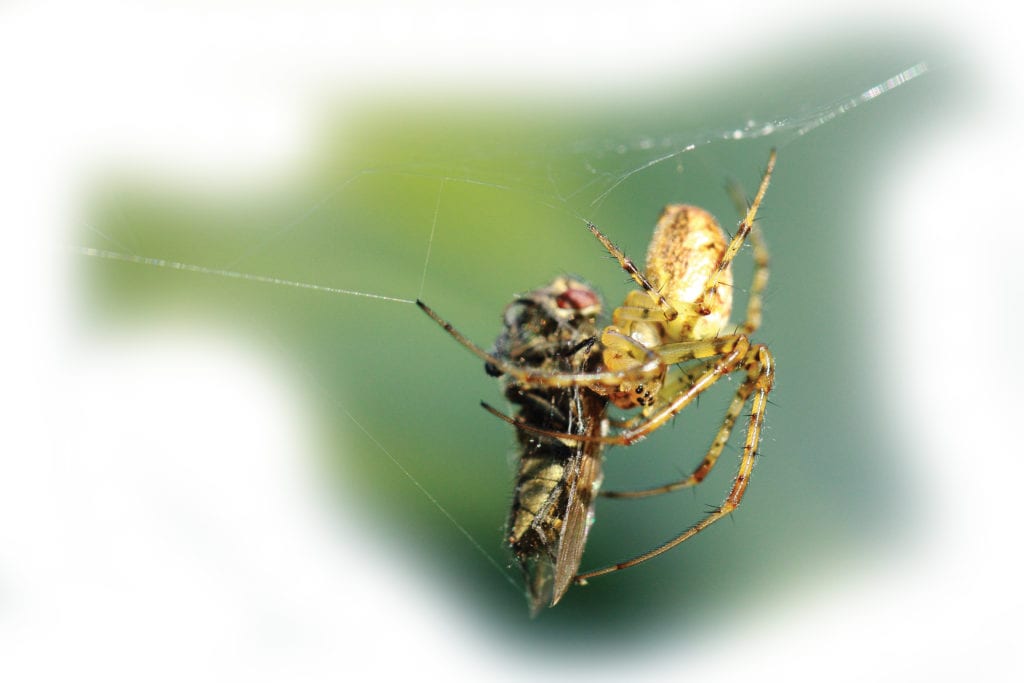Spider Web Stickiness (June 11)


Spider webs are known for their strength, but that is not the only thing needed to capture a flying insect. The web needs to be sticky, and spider webs are definitely sticky. You may have noticed this when cleaning up cobwebs – they are very difficult to remove from your hands. Spiders place tiny glue droplets, about 20 drops every 1/16 inch, along certain strands of their spider web. Their insect prey is caught by this glue. But this is no ordinary glue that just sticks things together. This glue is “smart glue.”
Imagine a flying insect hitting the super-sticky web and getting glued on. The spider needs to remove the insect without getting himself stuck, but how does he do it? He waits patiently. This glue is the stickiest when the flying insect hits the web at high speed. When the insect struggles in the web at a lower speed, this glue acts like a rubber band. When the struggling insect tires and stops moving, the glue gets even less sticky – allowing the spider to pull its prey loose and retrieve its meal. Researchers are now trying to copy this “smart glue” that has variable stickiness according to each situation. Scientists recognize a good design when they see it. If there is a design, there must be a Designer, and that is God.
Psalm 105:1
KJV: O give thanks unto the Lord; call upon his name: make known his deeds among the people.
NIV: Give praise to the Lord, proclaim his name; make known among the nations what he has done.
